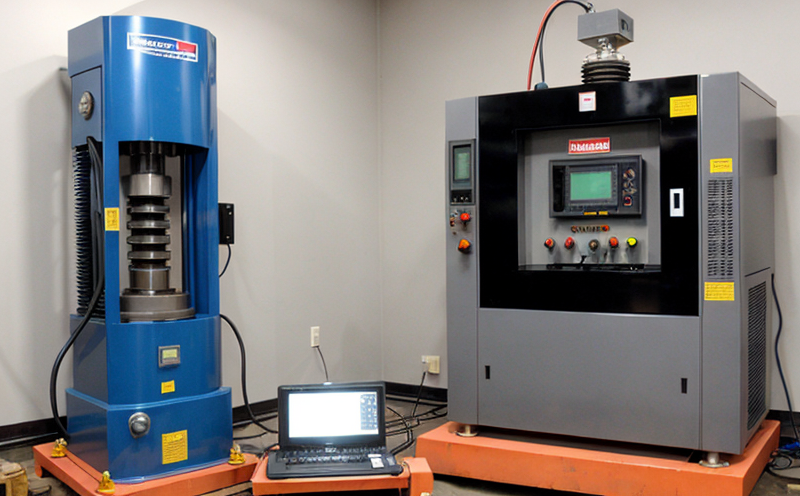ISO 20816 1 Mechanical Vibration Measurement for Rotating Equipment
The ISO 20816 series of standards is specifically designed to provide guidance on the measurement and evaluation of mechanical vibrations in rotating machines. This service focuses on the first part, Measurement, which is crucial for ensuring that equipment operates within safe and efficient parameters.
Mechanical vibration can have significant effects on the performance and longevity of rotating machinery such as motors, turbines, generators, and compressors. It is a key indicator of potential issues like bearing wear, misalignment, or unbalance. By measuring mechanical vibrations according to ISO 20816-1, you can gain insights into these factors early on, allowing for proactive maintenance and avoiding costly downtime.
The standard outlines the procedures for setting up measurement points, selecting sensors, calibrating instruments, and recording data. It emphasizes the importance of understanding the machine's operational characteristics to ensure accurate measurements. This knowledge is essential for interpreting results correctly and making informed decisions about necessary actions.
One of the primary challenges in mechanical vibration testing lies in ensuring consistent conditions across different machines and environments. ISO 20816-1 addresses this by providing detailed guidance on how to establish a baseline for each machine, which serves as a reference point for future measurements. This approach helps in detecting changes that may indicate developing problems.
The standard also covers the use of various types of sensors, including accelerometers and velocity transducers, depending on the specific requirements of the test. Proper placement of these sensors is critical to obtaining reliable data. The document provides recommendations on where to place sensors based on the machine's structure and expected vibration patterns.
Calibration plays a vital role in ensuring the accuracy of measurements. ISO 20816-1 specifies procedures for calibrating both the sensors themselves and the recording instruments. Regular calibration is recommended to maintain precision over time, especially considering that environmental factors like temperature changes can affect sensor performance.
Data analysis is another critical aspect of this standard. Once collected, data should be processed using appropriate software tools to extract meaningful information about the machine's condition. ISO 20816-1 offers guidelines on signal processing techniques and how to interpret the results in relation to predefined thresholds set by industry standards.
Understanding the full scope of ISO 20816-1 requires familiarity with both theoretical principles and practical applications. This knowledge is particularly beneficial for quality managers, compliance officers, R&D engineers, and procurement professionals involved in assessing mechanical systems' performance and reliability.
| Machine Type | Vibration Measurement Parameters | Sensor Placement Recommendations (ISO 20816-1) |
|---|---|---|
| Turbine | Amplitude, Frequency, Phase Shift | At the bearing supports and on the casing |
| Motor | Amplitude, Frequency, Harmonics | On the motor shaft and at the mounting points |
| Generator | Amplitude, Frequency, Phase Angle | At the generator shaft and on the frame |
Industry Applications
The application of ISO 20816-1 extends across multiple industries where rotating machinery plays a critical role. Key sectors include power generation, manufacturing, automotive, and aerospace.
| Industry Sector | Key Machinery Types | Main Applications |
|---|---|---|
| Power Generation | Turbines, Generators | Vibration monitoring to ensure safe and efficient operation |
| Manufacturing | Motors, Pumps, Compressors | Predictive maintenance for reducing downtime and improving productivity |
| Automotive | Engines, Transmissions | Diagnostics to enhance vehicle performance and safety |
| Aerospace | Turbine Engines, Propellers | Vibration control for mission-critical components |
The ability to measure mechanical vibrations accurately is particularly important in these industries due to the high stakes involved. For instance, in power generation, any malfunction could lead to blackouts; in automotive and aerospace sectors, reliability is paramount.
By adhering to ISO 20816-1, organizations can ensure that their rotating equipment meets international standards for safety and performance. This not only enhances operational efficiency but also supports compliance with regulatory requirements.
Why Choose This Test
Choosing mechanical vibration measurement according to ISO 20816-1 offers several advantages over other methods or approaches:
Accurate and reliable data collection ensures precise diagnostics of machine condition.
Compliance with international standards adds credibility to your testing processes.
Predictive maintenance strategies are more effective, leading to reduced downtime and lower operational costs.
Data can be easily shared among different stakeholders for comprehensive oversight and decision-making.
Continuous monitoring allows for early detection of potential issues, preventing catastrophic failures.
The standardized procedures ensure consistency across various machines and environments.
In summary, ISO 20816-1 provides a robust framework for mechanical vibration measurement that benefits both the manufacturer and end-user. It supports continuous improvement in product design while ensuring safety and reliability throughout the lifecycle of rotating equipment.
Use Cases and Application Examples
In the context of wind turbines, this standard aids in identifying blade imbalance leading to increased wear on gears and bearings.
For electric motors used in industrial processes, it helps in detecting early signs of bearing failures before they cause complete shutdowns.
In automotive engines, it assists in optimizing engine tuning by minimizing vibrations that could affect fuel efficiency and emissions.
Aerospace turbines benefit from this standard through enhanced vibration monitoring which ensures optimal performance during critical missions.
These use cases highlight the versatility of ISO 20816-1 in addressing diverse challenges across various sectors. The ability to adapt and apply these principles effectively underscores its value as a comprehensive guide for mechanical vibration measurement.





